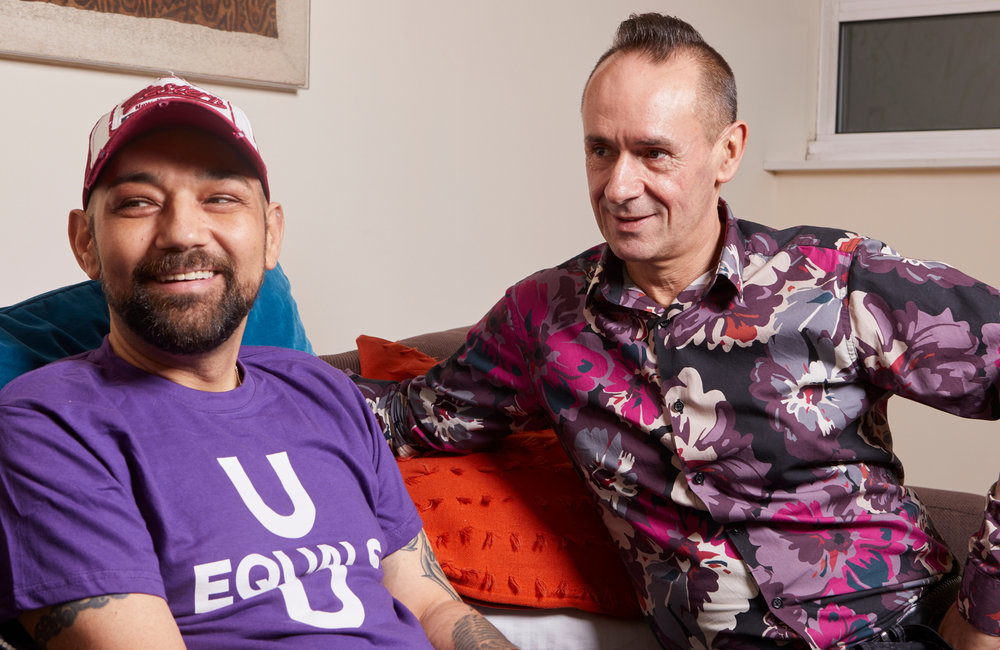
Undetectable = Untransmittable (U=U) messaging makes HIV-positive gay and bisexual men feel better about their HIV status, with many believing that it also lessens the stigma associated with living with HIV, according to the research published in the journal of AIDS Patient Care and STDs.
People who had an undetectable viral load and those continuously taking their HIV medications were especially likely to think that U=U benefitted their self-image and reduced social stigma around HIV.
“The two most consistent findings – echoing the literature on acceptability of U=U – were that [self-reported] undetectable viral load and excellent ART [antiretroviral therapy] adherence were associated with higher ratings of the personal and societal benefits of U=U and a greater likelihood of having discussed viral load and HIV transmission risk with a [healthcare] provider,” write the authors.
There is overwhelming evidence, including from the PARTNER studies, showing that people taking HIV treatment who have an undetectable viral load cannot transmit the virus to their sexual partners. In 2016, the Undetectable = Untransmittable (U=U) campaign was launched by the Prevention Access Campaign to promote knowledge of the impact of an undetectable viral load on infectiousness.
A research team led by Dr Jonathon Rendina of the City University New York wanted to see how U=U affected the self-image of HIV-positive gay and bisexual men and their perceptions of HIV stigma in society. The investigators were also curious as to whether engagement with HIV care affected perceptions of the individual and societal benefits of U=U and if people living with HIV were discussing viral load and infectiousness with their healthcare providers.
To answer these questions, they designed an online survey targeted at gay and bisexual men living with HIV. The survey was circulated via social media sites and dating apps between early 2018 and late 2019.
Data from 30,361 participants with the median age of 38 were included in the study. Almost all of the participants (99.2%) identified as cisgender, while 90% identified as gay/queer and 10% as bisexual.
As regards viral load, 85% of participants reported they were undetectable, 10% said their viral load was detectable and 5% were unsure.
There was clear evidence that participants perceived U=U messaging as beneficial.
Almost 82% of the participants said that U=U made them feel better about their own HIV status, including 59% who said they felt much better. Individuals with an undetectable viral load were especially likely to report that U=U improved their HIV-related self-image.
U=U was also believed to have potential benefits in terms of HIV-related stigma. Seventy-nine per cent of the respondents stated it would have a positive impact on social stigma while 18% said it would make no difference.
Results of the study showed that participants with an undetectable viral load had the most positive attitudes concerning the U=U message, self-image and HIV stigma. These opinions were also more likely to be held by participants who rated their ART adherence as “excellent”.
Other factors associated with favourable opinions about U=U were having an HIV-negative partner, having multiple sexual partners and recent condomless anal sex.
The majority of participants (71%) reported that they had heard the U=U slogan while 24% said they had not. The most common sources of information on the topic were HIV-related news sites (seen by 55%) and profiles on dating apps (51%). Other sources of information included friends, ads on apps, sexual partners, healthcare providers and scientific/medical literature. Two-thirds of participants reported discussing viral load and transmission risk with a healthcare provider.
The authors of the study comment that HIV researchers and practitioners should consider not only the HIV prevention benefits for HIV-negative gay and bisexual men but also the significant personal and social benefits of U=U for gay and bisexual men living with HIV. For example, learning about U=U from a healthcare provider may increase patient trust and re-engagement in care, achieving undetectable status may provide a new motivation, and U=U may reduce HIV stigma.
Rendina HJ et al. Treatment is more than prevention: perceived personal and social benefits of Undetectable = Untransmissable messaging among sexual minority men living with HIV. AIDS Patient Care and STDs, 34: 444-51, 2020 (open access).
DOI: 10.1089/apc.2020.0137
